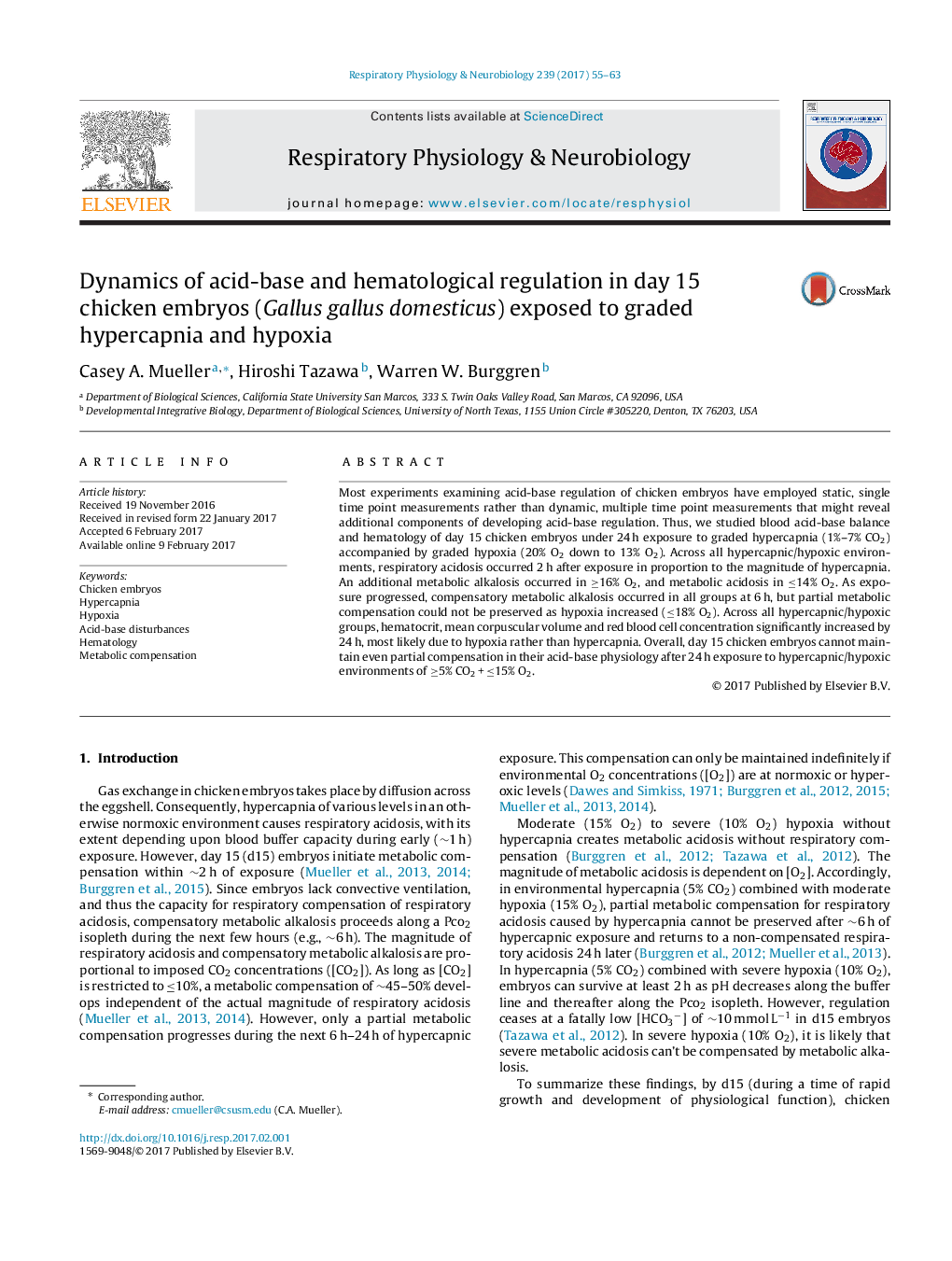| Article ID | Journal | Published Year | Pages | File Type |
|---|---|---|---|---|
| 5594202 | Respiratory Physiology & Neurobiology | 2017 | 9 Pages |
Abstract
Most experiments examining acid-base regulation of chicken embryos have employed static, single time point measurements rather than dynamic, multiple time point measurements that might reveal additional components of developing acid-base regulation. Thus, we studied blood acid-base balance and hematology of day 15 chicken embryos under 24 h exposure to graded hypercapnia (1%-7% CO2) accompanied by graded hypoxia (20% O2 down to 13% O2). Across all hypercapnic/hypoxic environments, respiratory acidosis occurred 2 h after exposure in proportion to the magnitude of hypercapnia. An additional metabolic alkalosis occurred in â¥16% O2, and metabolic acidosis in â¤14% O2. As exposure progressed, compensatory metabolic alkalosis occurred in all groups at 6 h, but partial metabolic compensation could not be preserved as hypoxia increased (â¤18% O2). Across all hypercapnic/hypoxic groups, hematocrit, mean corpuscular volume and red blood cell concentration significantly increased by 24 h, most likely due to hypoxia rather than hypercapnia. Overall, day 15 chicken embryos cannot maintain even partial compensation in their acid-base physiology after 24 h exposure to hypercapnic/hypoxic environments of â¥5% CO2 + â¤15% O2.
Related Topics
Life Sciences
Biochemistry, Genetics and Molecular Biology
Physiology
Authors
Casey A. Mueller, Hiroshi Tazawa, Warren W. Burggren,
